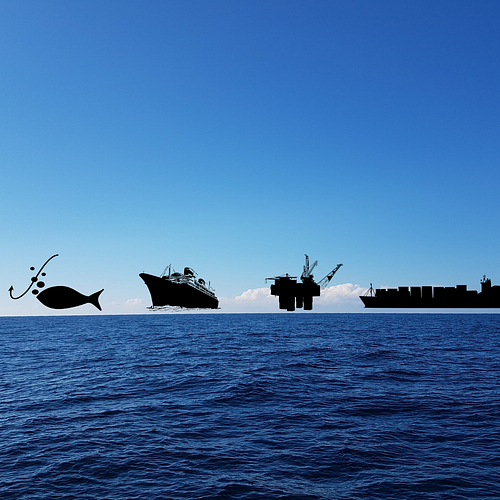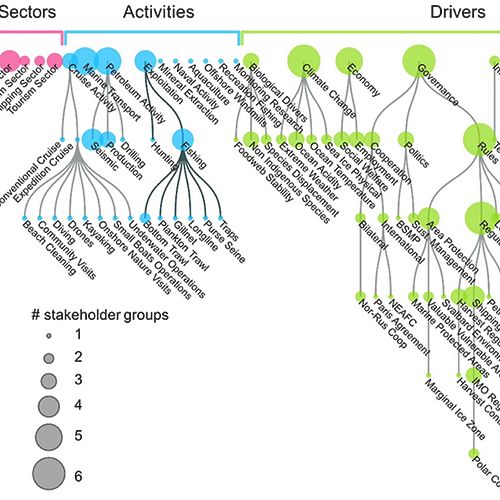2. august 2023 nyhet
The Barents Sea ecosystem components and services are under pressure from climate change and other anthropogenic impacts. A recent publication presents the results from a study applying an Ecosystem management approach to address multiple pressures by integrative strategies. The goal of the study has been to highlight key issues for future management prioritization.
The research team applied a participatory approach to identify priorities in a scoping phase where they discussed and defined the characterization of the social-ecological system. A scoping exercise was performed using an open and flexible multi-stakeholder approach to build conceptual models of the Barents Sea social-ecological system. In this process stakeholders identified key issues and the research team worked with their input. After standardizing vocabulary, a complex hierarchical model structure containing 155 elements was condensed to a simpler model structure containing a maximum of 36 elements. To capture a common understanding across stakeholder groups, inputs from the individual group models were compiled into a collective model.
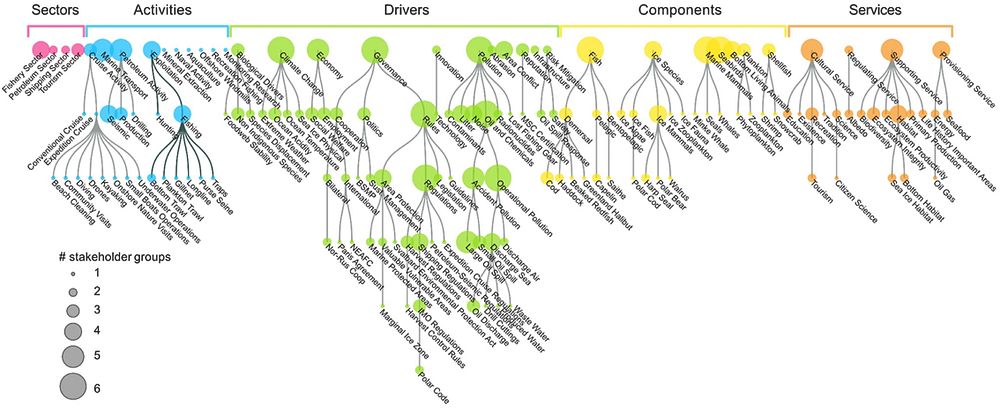
Figure 1: Complete set of elements (circles) identified by all stakeholder groups, and their hierarchical structure (lines). The elements are classified into five major categories characterized by unique colors: sectors (pink), activities (blue), drivers (green), ecosystem components (yellow) and ecosystem services (orange). Level-1 indicates the major sub-categories. Elements that are described at greater level of detail (children elements) are found at levels- 2 to 6. The size of the circles is proportional to the number of stakeholder groups which identified the corresponding element or one of its children.
Stakeholders' representation of the Barents Sea social-ecological system is complex and often group specific, emphasizing the need to include social scientific methods to ensure the identification and inclusion of key stakeholders in the process. Any summary or simplification of the stakeholders' representation neglects important information. Some commonalities are highlighted in the collective model, and additional information from the hierarchical model is provided by multicriteria analysis.
The collective conceptual stakeholder model provides input to an integrated overview and strengthens prioritization in Ecosystem-based management by supporting the development of qualitative network models. Such models allow for exploration of perturbations and can inform cross-sectoral management trade-offs and priorities.
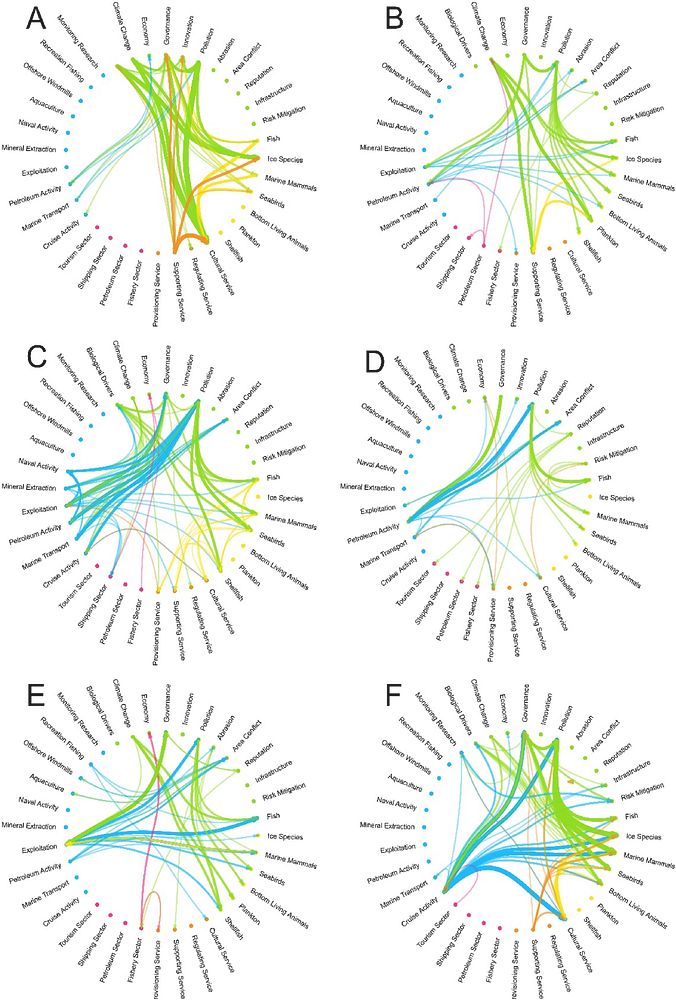
Figure 2: Condensed stakeholder group models (A–F) of the Barents Sea Social ecological system. The 36 circles represent the major elements (Level-1) colorized according to the main categories: sectors (pink), activities (blue), drivers (green), ecosystem components (yellow) and ecosystem services (orange). Colored lines show the connections that were identified by each stakeholder group and the color of each line correspond to the category of the ‘sender’ element. Line thickness is proportional to the number of original connections (i.e. connections between elements at any level) behind each ‘trimmed’ connection (connection between elements at Level-1 only).
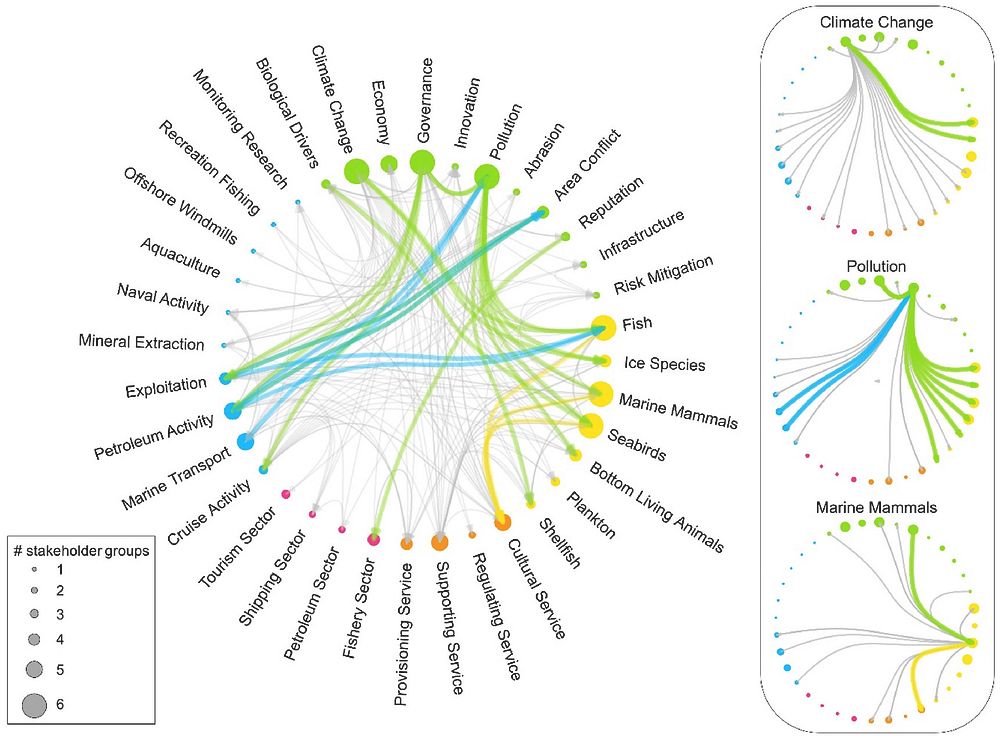
The publication is part of the BarentsRISK project, financed by the Research Council of Norway and led by the Institute of Marine Research (IMR) (by Geir Ottersen and Mette Skern-Maurizen). Project partners are UiT the Arctic University of Norway and the Norwegian Institute for Nature Research. First author, Nina Mikkelsen, was previously employed at IMR but now works for Akvaplan-niva.
Read the full article in Ocean and Coastal management, https://doi.org/10.1016/j.ocecoaman.2023.106724

